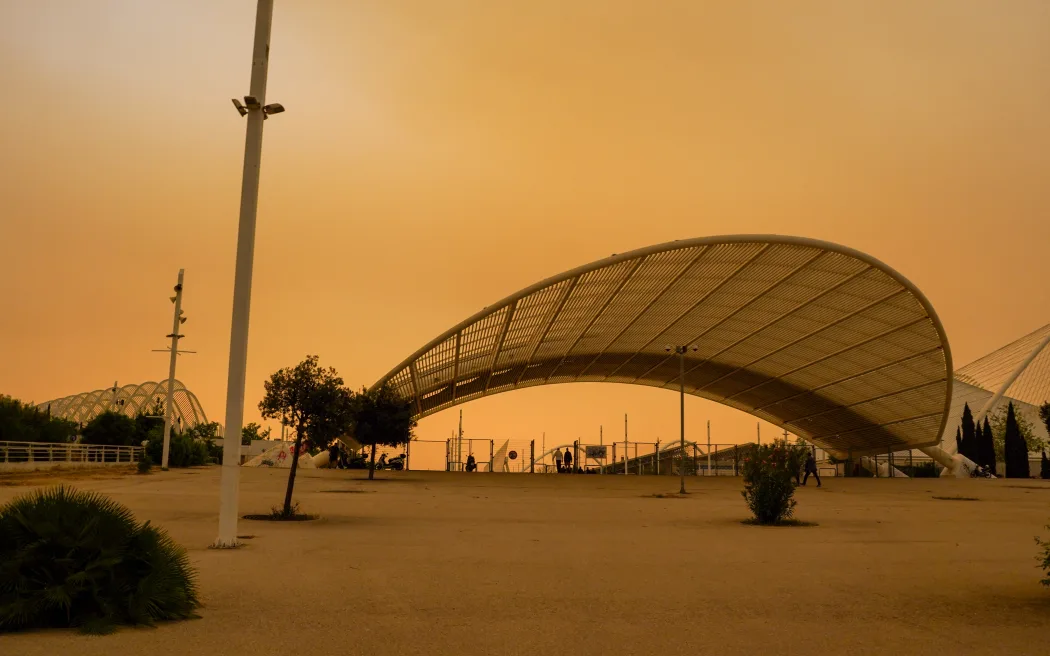- Athens enveloped in dramatic orange haze from Saharan dust clouds
- Severe episode compared to 2018; visibility impaired across Greece
- Respiratory caution advised; 25 wildfires reported amid oppressive atmosphere
A dramatic orange atmosphere has descended upon Athens due to Saharan dust clouds that have been carried in by the wind.
Officials claim it is one of the most severe episodes of this nature to strike Greece since 2018.
Similar clouds had previously besieged Greece in late March and early April; they had also engulfed portions of southern France and Switzerland.
Wednesday is expected to feature clear skies, according to the Greek meteorological service.
The dust had obscured the visibility of the Acropolis in Athens on Wednesday morning, as air quality had declined in many regions of the country. The haze has extended its northernmost extent to Thessaloniki.
Until the dust clouds subside, individuals with respiratory conditions in Greece have been advised to restrict their outdoor activities, don protective masks, and refrain from engaging in physical activity.
60 to 200 million tonnes of mineral particles are discharged annually from the Sahara.
While the majority of the dust rapidly descends to Earth, a minority of the minuscule particles can traverse extensive distances, occasionally reaching Europe.
The oppressive atmosphere, particularly in southern Greece, has resulted from the confluence of elevated temperatures and dust particles.
A comparison was made by meteorologist Kostas Lagouvardos between the view from one weather station and that of the planet Mars.
“Start your investing journey with a gift! Claim your free Webull shares.”
Tuesday, the fire department documented a total of twenty-five wildfires that had erupted within the previous twenty-four hours. As temperatures surged above 30 degrees Celsius (86 degrees Fahrenheit), a fire broke out near a naval base on the island of Crete, requiring the evacuation of homes and a kindergarten, according to local reports.
Saharan dust plumes are prevalent throughout Europe and exhibit a range of intensities; nevertheless, their occurrence is predominantly observed in the spring and autumn seasons.
This current phenomenon in the Eastern Mediterranean was triggered by a low-pressure area over Libya, which generated strong southerly winds and, on Tuesday in particular, transported high concentrations of dust and sediment from North Africa into Greece. Additionally, the southerly breezes carried with them warm desert air. In the late April season, temperatures on the Greek mainland and islands surged significantly above the mean, with the Chania region of Crete recording a peak of 36.6C.
Wednesday’s maximum dust concentrations will be concentrated further east due to the continued westward movement of a cold front carrying cleaner, fresher air. By the end of the week, the Eastern Mediterranean will once again experience temperatures that are more typical for the season and air that is fresher.
